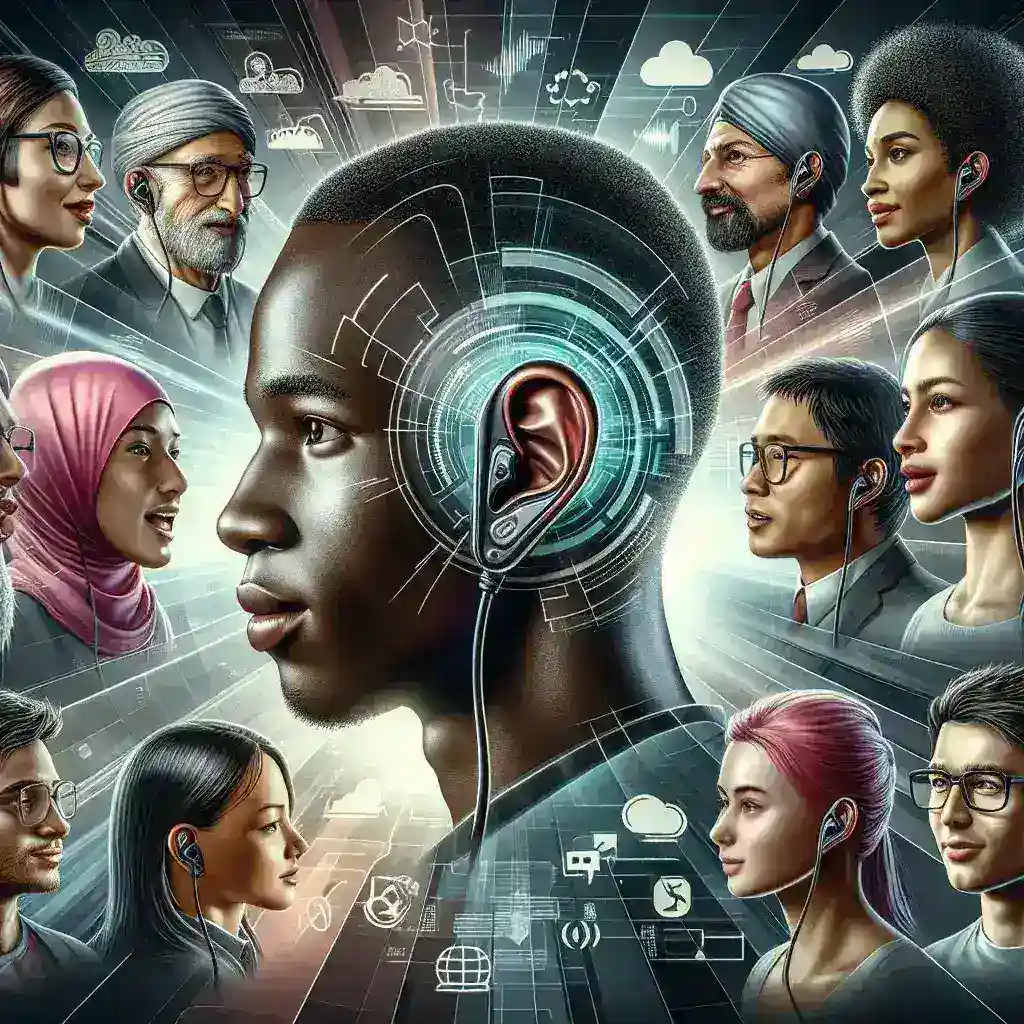
Introduction
In today’s interconnected world, the ability to communicate across language barriers is more essential than ever. The emergence of technology that facilitates real-time translation has opened doors to new opportunities for collaboration, travel, and cultural exchange. Among these innovations, the ear-worn device that translates spoken languages in real-time without cloud processing stands out as a game-changer in the realm of communication technology.
Understanding the Technology
At its core, this ear-worn device is designed to utilize advanced algorithms and machine learning techniques to instantly translate spoken words. Unlike traditional translation devices that often depend on cloud processing, this innovative gadget operates independently, minimizing latency and ensuring privacy. The device is lightweight, comfortable to wear, and allows for natural conversation flow, making it an ideal tool for both casual and professional interactions.
The Mechanism Behind Real-Time Translation
The translation process of these devices involves several intricate steps:
- Audio Capture: The device is equipped with high-quality microphones that capture the speaker’s voice in real-time, filtering out background noise for clearer audio.
- Speech Recognition: Utilizing advanced speech recognition algorithms, the device converts spoken words into text in the original language.
- Language Processing: Once the text is generated, it is processed through an internal database of linguistic rules and vocabulary.
- Translation: The processed text is then translated into the target language, employing a neural network approach to enhance accuracy.
- Audio Output: Finally, the translated text is converted back into speech, allowing the listener to hear the translation in real-time through the device’s speaker.
Advantages of Ear-Worn Translation Devices
While several translation methods exist, the ear-worn device presents numerous advantages:
- Real-Time Communication: Unlike traditional translation apps that require manual input, this device offers instantaneous translations, allowing conversations to flow seamlessly.
- Privacy and Security: Since the device processes translations locally, there is no risk of sensitive conversations being exposed to the cloud, making it a secure option for personal and professional use.
- Portability: Being lightweight and compact, these devices are easy to carry, making them suitable for travelers, business professionals, and anyone needing quick translations on the go.
- Hands-Free Operation: Users can engage in conversations without being distracted by a smartphone or tablet, making interactions more personal and engaging.
Historical Context
The journey to real-time translation began decades ago. Early attempts at automated translation focused heavily on text, with services like Google Translate emerging in the early 2000s. However, advancements in artificial intelligence and natural language processing have significantly improved the capabilities of translation technologies. The development of ear-worn devices is a direct result of this evolution, representing a shift toward more interactive and user-friendly solutions.
The Future of Translation Technology
As we look ahead, the future of ear-worn translation devices appears promising:
Increased Language Support
With ongoing advancements, we can expect these devices to support a wider range of languages and dialects, making cross-cultural communication even more accessible.
Enhanced Accuracy
Machine learning algorithms will continue to improve, resulting in even more accurate translations that capture nuances, idioms, and cultural references.
Integration with Other Technologies
Future iterations of these devices may integrate with augmented reality (AR) and virtual reality (VR) technologies, creating immersive experiences where users can communicate effortlessly across language barriers.
Challenges and Considerations
Despite the numerous advantages, there are still challenges that developers must overcome:
- Language Variability: Regional accents and dialects can affect the accuracy of translations, necessitating continuous updates and improvements to the device’s capabilities.
- Cultural Sensitivity: Understanding the cultural context behind certain phrases is crucial for effective communication. Developers must ensure their devices account for these nuances.
- Battery Life: As with any wearable technology, battery life is a significant concern. Manufacturers must strive to create devices that can withstand prolonged use.
Real-World Applications
The potential applications for ear-worn translation devices are vast:
Travel and Tourism
Travelers can explore new cultures without the fear of language barriers hindering their experience. Whether ordering food, asking for directions, or engaging with locals, real-time translation devices enhance the travel experience.
Business and International Relations
In the corporate world, these devices can facilitate negotiations, meetings, and collaborations across different countries, fostering better communication and understanding among diverse teams.
Healthcare
In medical settings, clinicians can communicate with patients who speak different languages, ensuring that critical information is conveyed accurately.
Expert Opinions
Experts in the field of linguistics and technology have hailed ear-worn translation devices as a revolutionary step in bridging communication gaps. Dr. Emily Turner, a linguistics professor at a leading university, notes, “This technology not only enhances communication but also promotes cultural understanding, which is crucial in our globalized world.”
Conclusion
In conclusion, ear-worn devices that translate spoken languages in real-time without cloud processing represent a significant leap forward in communication technology. By providing accurate, private, and instantaneous translations, these devices have the potential to transform how we interact across cultures and languages. As technology continues to evolve, we can only anticipate further innovations that will enhance our ability to connect with one another, regardless of language barriers.
